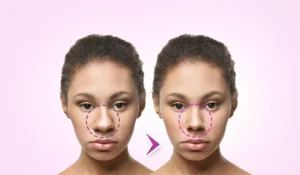Healthy Communication in Relationships – Communication forms the cornerstone of any successful relationship, serving as the binding force that fosters understanding, trust, and emotional intimacy. When communication thrives within a relationship, it paves the way for mutual respect, empathy, and a deeper connection between partners.

Key Components of Healthy Communication
Active Listening: One of the fundamental aspects of healthy communication is active listening. It involves more than just hearing words; it encompasses understanding emotions, perspectives, and intentions behind the spoken words.
Clear and Respectful Expression: Effective communication involves expressing thoughts and feelings clearly while maintaining respect for each other’s opinions and emotions.
Empathy and Understanding: Being empathetic and understanding towards each other’s feelings, needs, and viewpoints is crucial for fostering a supportive and healthy environment.
Barriers to Effective Communication
However, various barriers often hinder effective communication in relationships. Misunderstandings, lack of trust, and carrying emotional baggage from past experiences can impede the flow of healthy communication.
Benefits of Healthy Communication in Relationships
When communication thrives, relationships flourish. It helps strengthen the bond between partners, resolves conflicts in a constructive manner, and builds a foundation of trust and support.
Improving Communication Skills
Developing robust communication skills involves practicing empathy, honing active listening, and articulating needs and emotions clearly.
Communication Styles in Relationships
Different communication styles—assertive, passive, and aggressive—affect how partners interact. Nurturing an assertive communication style encourages open and respectful dialogue.
Conflict Resolution Through Communication
Healthy communication plays a pivotal role in resolving conflicts by promoting constructive dialogue, fostering compromise, and seeking understanding rather than dominance.
The Role of Nonverbal Communication
Nonverbal cues, such as body language, tone of voice, and eye contact, significantly impact the message conveyed and should be considered in healthy communication.
Technology’s Impact on Communication in Relationships
While technology facilitates communication, balancing virtual interactions with face-to-face communication is vital. Misinterpretation due to lack of cues poses challenges.
Cultivating Healthy Communication Habits
Daily check-ins, encouraging openness, and seeking feedback are habits that nurture healthy communication within relationships.
Maintaining Healthy Boundaries in Communication
Respecting differing opinions, personal space, and understanding individual limits contribute to maintaining healthy boundaries in communication.
Supporting Mental Health Through Communication
Effective communication aids in addressing emotional needs, embracing vulnerability, and seeking professional help when necessary, supporting overall mental health.
Overcoming Communication Challenges
Patience, persistence, and a willingness to seek common ground help overcome communication hurdles, fostering continuous growth and adaptation.
Conclusion
Healthy communication forms the backbone of thriving relationships, enhancing understanding, trust, and emotional connection between partners. Implementing strategies and nurturing effective communication habits can significantly benefit relationships.
Unique FAQs:
- How can I improve active listening in my relationship?
- What role does body language play in communication?
- Is it possible to change communication styles in a relationship?
- How does emotional baggage affect communication?
- Should technology be limited for better communication in relationships?




